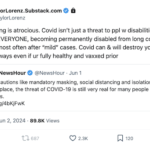For years, Google has denied using clicks on organic listings as a ranking signal, but we now know that this is not the case: Recently published documents show that Google does in fact use click-related signals in its algorithms.
Here I provide an overview of these documents and my perspective on their impact on search engine optimization.
Organic Clicks
During Google’s federal antitrust trial last year, Pandu Nayak, Google’s vice president of search, testified The search engine uses a ranking system called “Navboost” (also known as “Glue”) to analyse user actions on search results (clicks, hovering, scrolling, swiping, etc.) and stores the data for 13 months.
Navboost serves results based on user interaction with relevant search result pages. The system also decides whether to include other features in the search results, such as videos, featured snippets, “questions people ask,” and local packs.
In the same trial, a Google internal PDF from 2016 was made public, stating:User Interaction” (clicks) as one of your top three ranking factors.
Many in the search engine community have long suspected that Google uses click counts in its ranking algorithm. We’ve also said that this algorithm is very specific and only exists for top-ranking pages (those that generate a lot of clicks). Therefore, other ranking signals such as inbound links and on-page relevance and quality are fundamental for all pages except the top-ranking listings.
Chrome browser clicks
Last month, documents Leaked Documents submitted by Google’s internal engineering department reveal how organic clicks impact rankings. They also allege that Google monitors how users interact with websites on their Chrome browser, a claim Google denies. that For many years.
So, regardless of the traffic source, Google knows how visitors who use Chrome interact with your website.
“Long click”
SEO pros have long theorized that click data determines the quality of content, with “dwell time” and “pogosticking” being much discussed. Bounce Rate Metric.
Thanks to an engineering leak, we now know that Google has such a metric called “long click”: the longer a ranking page keeps users on it, the better.
SEO Tips
- Keep a close eye on your most trafficked pages. Google has the most data on those pages. Make sure they are engaging and encourage meaningful interactions. Use heatmaps and other analytics to help you. Usability Tools Understand visitor behavior and optimize accordingly.
- Focus on meaningful clicks, not just search results. Aim to improve click-through rates from email newsletters and ads. Google accumulates this data from Chrome. Target your link building campaigns to what drives clicks.
- Optimize your page titles as they impact click-through rates on search result pages. Check out the top listings in the SERPs. and snippet Update it regularly to improve your click-through rate. Use structured data where possible. Earn rich snippets.





